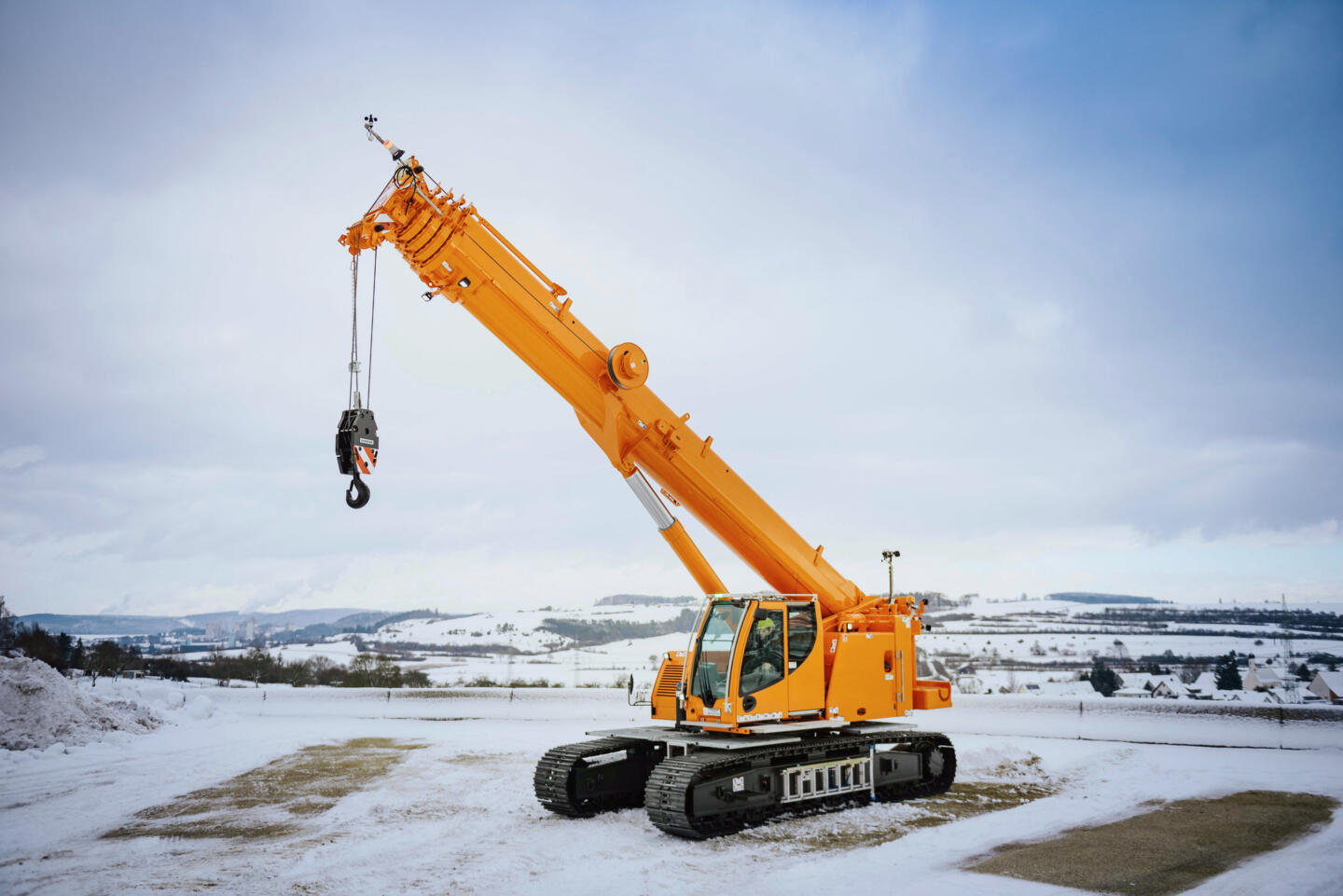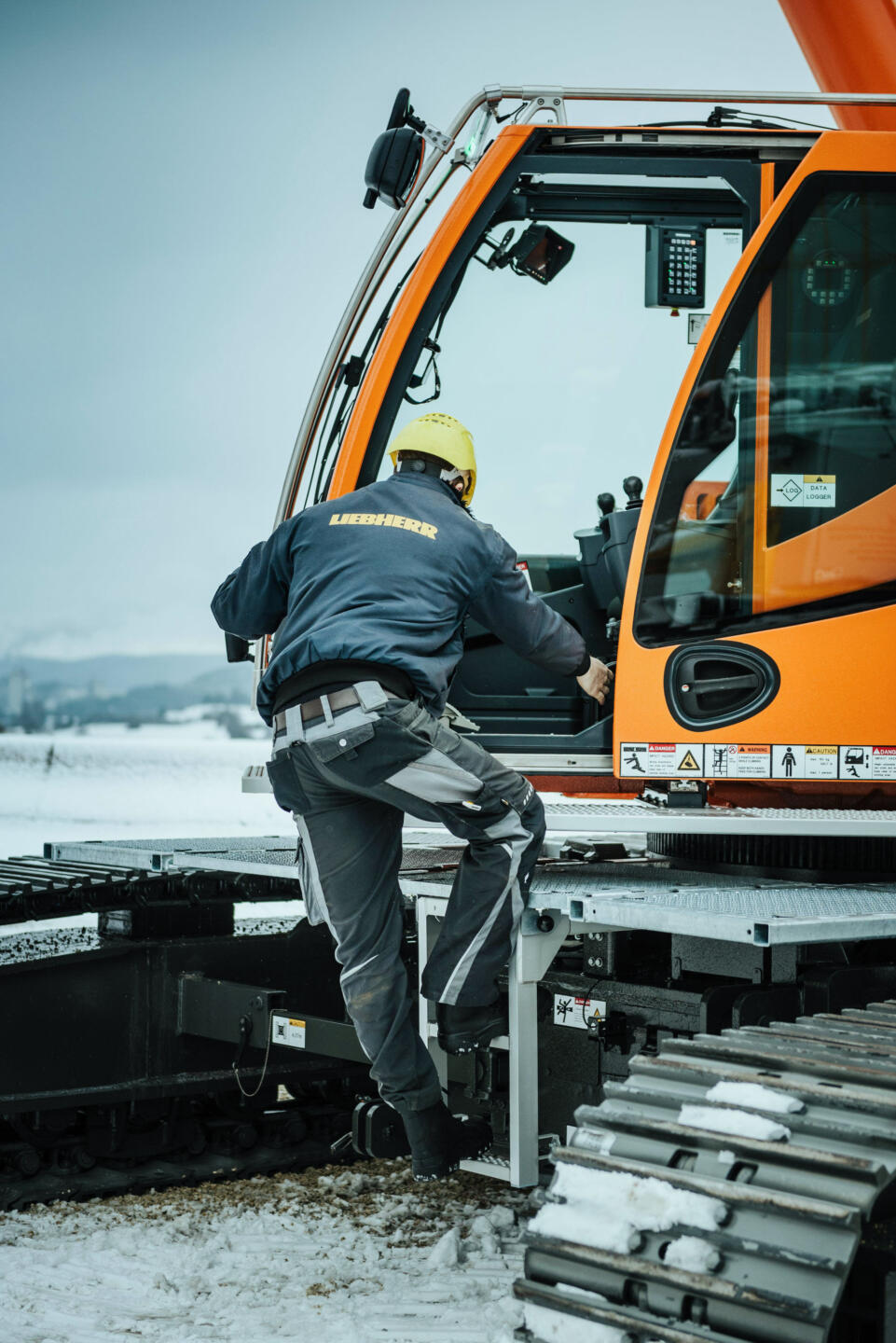The main difference to the LTR 1060 is the significantly reduced ballast – the LTR 1040 weighs in at a total of 20 tonnes less. 10 tonnes of central ballast have been taken off the chassis whilst a further 10 tonnes of counterweights have been removed from the slewing platform.

This new crane model, therefore, delivers outstanding value for money in the 40-tonne class – its lifting capacities up to a medium radius significantly surpass those of its competitors and its 40-metre telescopic boom is around 30 per cent longer than the standard in the class. This means that most crane jobs can be carried out without a folding jib.
Long, powerful telescopic boom
High lifting capacities are particularly important for assembling prefabricated components, one of the main areas of work for telescopic crawler cranes. For example, the LTR 1040 will hoist up to 8.6 tonnes with a radius of 10 metres throughout its entire 360° operating range. When it is fully raised, the lifting capacity of the 30.7 metre extended telescope is 18.8 tonnes and when fully extended, the 40 metre boom can hoist 10 tonnes. Using a 16 metre double folding jib, the LTR 1040 can achieve a maximum hoist height of 55 metres and can hoist a weight of 3.1 tonnes in this configuration.
Economical transport, fast set-up times
The LTR 1040 can be transported economically as it weighs just 43.5 tonnes, including its 5.6 tonnes of ballast. The axle loads for transport are less than 10 tonnes for a 3-axle tractor unit and a 4-axle semi low loader. By removing 5 tonnes of ballast, the LTR 1040’s weight can be reduced to 38.5 tonnes, which means it has a gross transport weight of less than 60 tonnes.
The crawler travel gear is retracted to a width of 3.0 metres for transport. The low crane height of just 3.15 metres ensures that economical standard semi low loaders can be used.

Ideal for assembling prefabricated components
Its construction and design make the LTR 1040 ideal for assembling prefabricated components. With a 2.5 metre erection jib and a second hoist unit, it can also carry out work in 2-hook mode. The load absorbed with the erection jib by the low loader is transferred to the second hook on the telescopic boom. This means that prefabricated components can be rotated into the correct position and moved to the installation site on the crawler travel gear.
The LTR 1040 can hoist up to 17.7 tonnes with 4-line reeving of the hook block on the erection jib. The runner on the LTR 1040 can handle loads of up to 9 tonnes as it can also use a double reeving constellation.
High safety standards
Being able to travel with a full load on the hook is a major benefit of crawler cranes. To exploit this feature to the full, Liebherr provides lifting capacity tables for various ground inclines. The fine gradation of up to 0.3, 0.7, 1.5, 2.5 and 4 degrees ensures perfect lifting capacities even on uneven site terrain types. On constricted sites, the LTR 1040 can also operate with its crawler tracks retracted to a width of 3 metres. Special lifting capacity tables are provided for this type of operation.
Liebherr has designed the access to the crane cab to be particularly safe and convenient. The crane operator can access his workplace in any slewing platform setting using folding ladders, a fixed platform on the crawler track and an extra-wide step on the cab. There is no need to climb over the crawler tracks and chains. This means that the LTR 1040 already meets the highest safety standards of the future which will come into force when the new EN13000 revision is enacted over the next few years.


 Copyright 2017-2023 All rights reserved.
Copyright 2017-2023 All rights reserved.